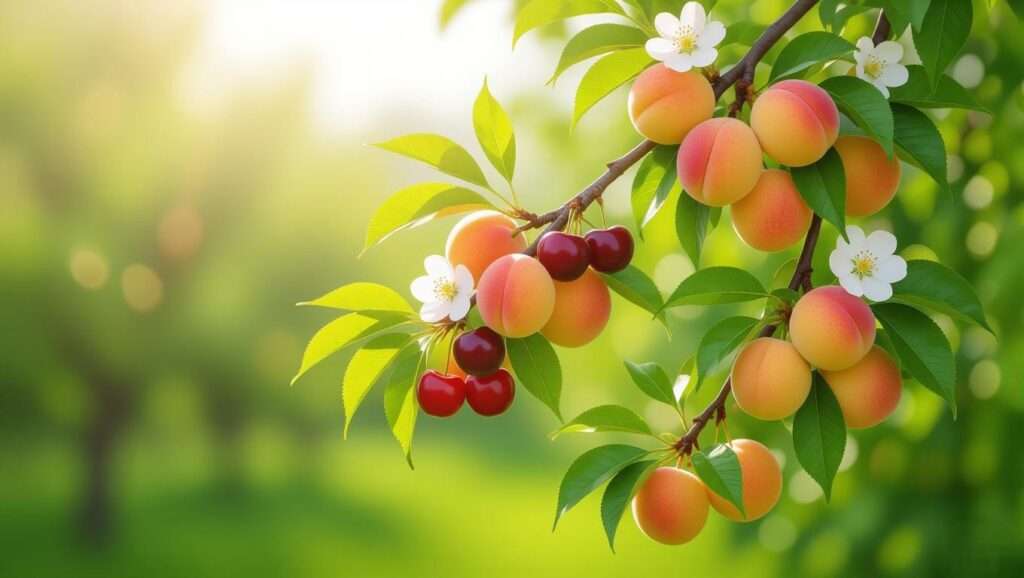Picture this: a single tree in your backyard bursting with peaches, plums, cherries, and more, all ripe for the picking! A fruit cocktail tree is the ultimate gardening marvel, blending multiple fruit varieties into one space-saving, productive wonder. Whether you’re a novice gardener or a seasoned horticulturist, growing a thriving fruit cocktail tree can transform your garden into a fruitful paradise. This comprehensive guide, crafted by a horticulture expert with over a decade of experience in multi-grafted fruit trees, delivers everything you need to know to plant, care for, and harvest from your fruit cocktail tree. From choosing the right varieties to troubleshooting common issues, we’ll ensure your tree flourishes with a bountiful harvest. 🌸
In this article, you’ll discover step-by-step planting techniques, expert care tips, and practical solutions to common challenges, all tailored to help you succeed. Let’s dive into the world of fruit cocktail trees and unlock the secrets to a vibrant, fruit-filled garden! 🍒
1. What Is a Fruit Cocktail Tree? 🍒
1.1 Definition and Benefits 🌟
A fruit cocktail tree, also known as a multi-grafted or combination fruit tree, is a single tree grafted with multiple fruit varieties, allowing it to produce different types of fruit simultaneously. For example, a stone fruit cocktail tree might yield peaches, plums, nectarines, and apricots, while a citrus version could offer oranges, lemons, and limes. These trees are a gardener’s dream, especially for those with limited space.
Benefits include:
- Space Efficiency: Perfect for small backyards, patios, or even container gardening.
- Diverse Harvests: Enjoy a variety of fruits without needing multiple trees.
- Aesthetic Appeal: A stunning addition to any garden with vibrant blossoms and colorful fruits.
- Cost-Effective: One tree provides the yield of several, saving money and effort.
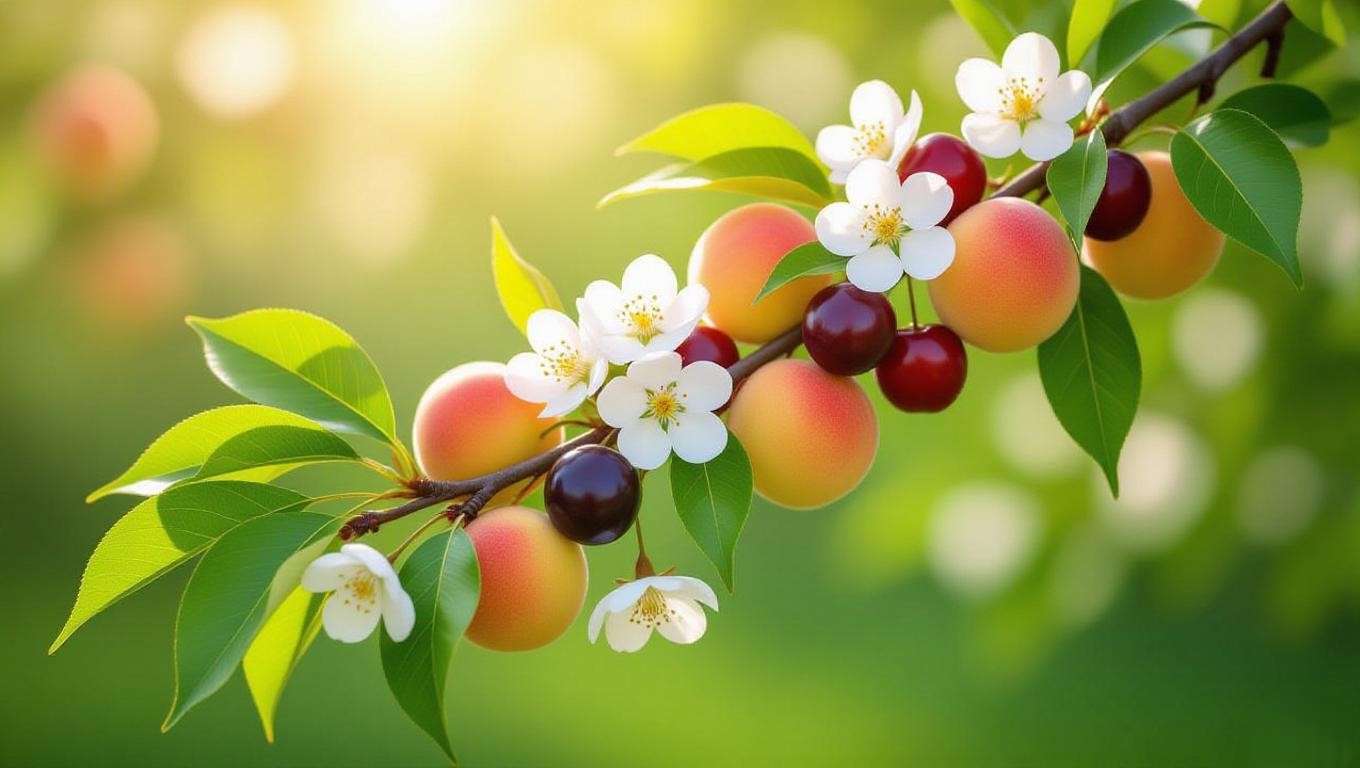
These trees are ideal for urban gardeners or anyone looking to maximize their garden’s potential. Imagine picking fresh peaches and plums from the same tree for a summer fruit salad! 🥗
1.2 How Fruit Cocktail Trees Work 🛠️
Fruit cocktail trees are created through grafting, a horticultural technique where branches (scions) from different fruit varieties are fused onto a single rootstock. The rootstock provides stability and nutrients, while the grafted branches produce their specific fruits. For successful grafting, the varieties must be compatible, typically within the same fruit family (e.g., stone fruits like peaches and plums or citrus fruits like lemons and oranges).
The magic lies in the balance: each grafted branch grows independently but shares the tree’s resources. This makes fruit cocktail trees a brilliant solution for small spaces, as they deliver diverse harvests without requiring a large orchard. For example, a 4-in-1 stone fruit tree might produce peaches in early summer, plums in mid-summer, and nectarines by late summer, offering a staggered harvest season. 🌞
2. Choosing the Right Fruit Cocktail Tree for Your Garden 🏡
2.1 Selecting Compatible Fruit Varieties 🍊
Choosing the right fruit cocktail tree starts with understanding which fruit varieties are grafted onto it. Most nurseries offer pre-grafted trees with compatible combinations, such as:
- Stone Fruit Trees: Peaches, plums, apricots, nectarines, or cherries.
- Citrus Trees: Oranges, lemons, limes, or tangerines.
- Apple or Pear Trees: Multiple apple or pear varieties for diverse flavors.
When selecting, consider your taste preferences and the tree’s compatibility with your climate. For example, stone fruit cocktail trees thrive in USDA hardiness zones 5-9, while citrus varieties prefer zones 8-11. Always purchase from reputable nurseries or online retailers like Stark Bro’s or FastGrowingTrees.com, ensuring the tree is healthy and the grafts are well-established. Look for labels detailing the grafted varieties and their care requirements.
Pro Tip: Ask the nursery about the rootstock used, as it affects the tree’s size and hardiness. Dwarf rootstocks are ideal for small spaces or containers. 🌱
2.2 Assessing Your Climate and Space ☀️
Before planting, evaluate your garden’s conditions:
- Climate: Check your USDA hardiness zone (available at plantmaps.com) to ensure the tree suits your region. For colder climates, opt for cold-hardy varieties like certain apple or cherry combinations.
- Space: Fruit cocktail trees typically need 10-15 feet of space for standard varieties or 6-8 feet for dwarfs. They’re perfect for small backyards, patios, or large containers.
- Sunlight: These trees require at least 6-8 hours of direct sunlight daily for optimal fruit production.
- Soil: Well-drained, loamy soil with a pH of 6.0-7.0 is ideal. Test your soil using a kit from your local garden center.
By matching the tree to your environment, you set the stage for a thriving, productive plant. 🌳
3. Planting Your Fruit Cocktail Tree: Step-by-Step Guide 🌱
3.1 Best Time to Plant 📅
Timing is critical for planting a fruit cocktail tree. The best seasons are:
- Spring: Ideal for most climates, allowing the tree to establish roots before summer heat.
- Fall: Suitable for warmer regions (zones 7-9), giving the tree a head start before winter dormancy.
Avoid planting during extreme heat or freezing conditions to prevent stress on the young tree. Check local weather patterns and aim for a mild, overcast day to reduce transplant shock.
3.2 Preparing the Site 🕳️
Proper site preparation ensures your tree’s long-term success:
- Choose a Location: Select a spot with full sun and good air circulation to prevent fungal issues.
- Test the Soil: Use a soil testing kit to check pH and nutrient levels. Amend with compost or organic matter if needed to achieve a pH of 6.0-7.0.
- Dig the Hole: Make it twice as wide and as deep as the root ball (typically 18-24 inches wide). Loosen the soil to encourage root growth.
3.3 Planting Techniques 🌳
Follow these steps for a successful planting:
- Prepare the Tree: For bare-root trees, soak the roots in water for 1-2 hours. For potted trees, gently loosen the root ball.
- Position the Graft Union: Place the tree so the graft union (the visible bulge where grafts meet the rootstock) is 2-4 inches above the soil line to prevent rooting issues.
- Fill the Hole: Backfill with a mix of native soil and compost, tamping gently to remove air pockets.
- Water Thoroughly: Give the tree a deep watering to settle the soil.
- Mulch and Stake: Apply a 2-3 inch layer of organic mulch (e.g., wood chips) around the base, keeping it away from the trunk. Stake the tree if it’s tall or in a windy area to ensure stability.
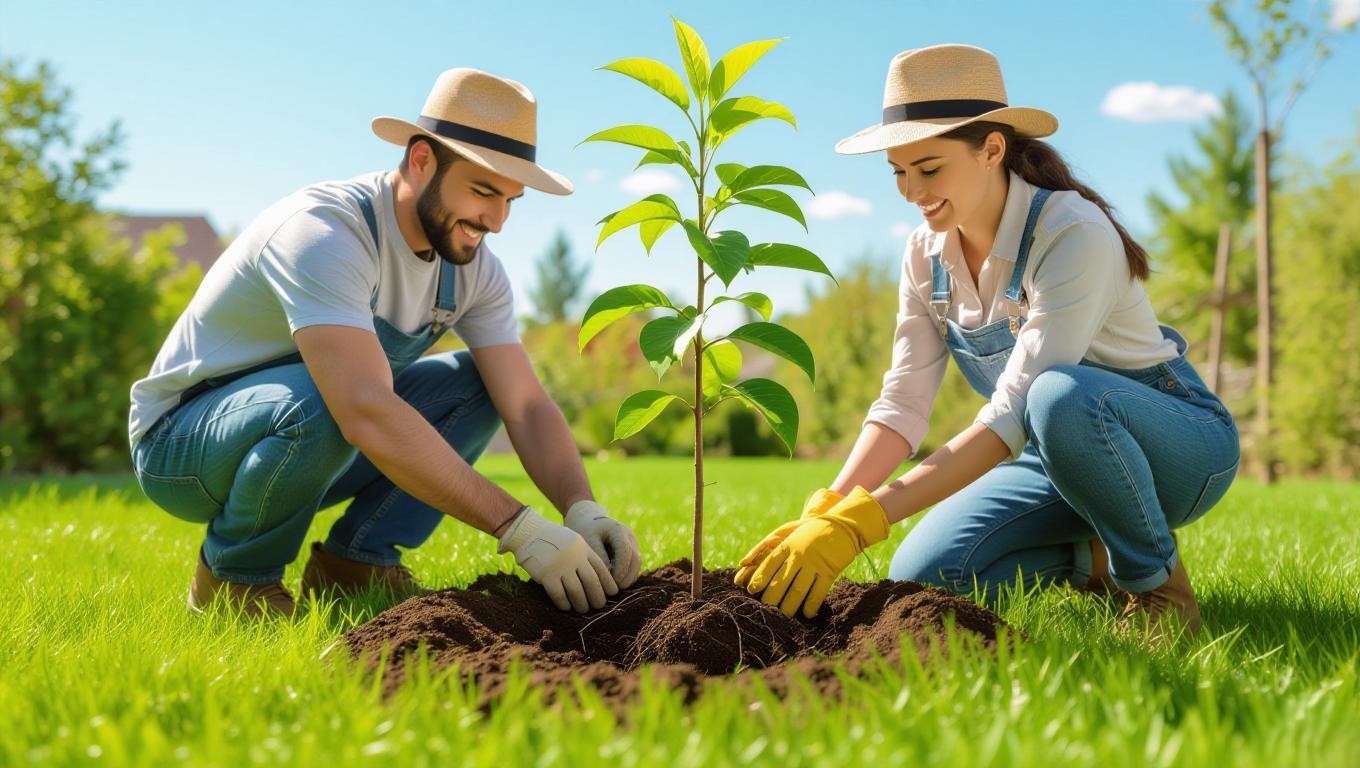
Expert Tip: Water the tree immediately after planting and check soil moisture daily for the first two weeks. 💧
4. Essential Care Tips for a Thriving Fruit Cocktail Tree 🌿
4.1 Watering Needs 💧
Proper watering is crucial for fruit cocktail trees, especially during their first year:
- Frequency: Water deeply once or twice a week, depending on weather and soil drainage. Aim for 1-2 inches of water weekly.
- Method: Use a soaker hose or drip irrigation to deliver water directly to the root zone, avoiding wet foliage.
- Seasonal Adjustments: Increase watering during hot, dry summers and reduce in cooler months or rainy periods.
- Signs of Issues: Yellowing leaves may indicate overwatering, while wilting or browning suggests underwatering.
As the tree matures, monitor soil moisture with a finger test (1-2 inches deep) to maintain consistent hydration.
4.2 Fertilizing for Optimal Growth 🌾
Fertilization supports healthy growth and fruit production:
- Type: Use a balanced fertilizer (e.g., 10-10-10 N-P-K) or organic options like composted manure or fish emulsion.
- Schedule: Apply in early spring before bud break and again in mid-summer after fruit set. Avoid late-season fertilization to prevent new growth before winter.
- Application: Spread fertilizer evenly around the drip line (the area under the outer canopy), then water thoroughly.
- Caution: Over-fertilizing can burn roots or cause excessive vegetative growth, reducing fruit yield. Follow package instructions carefully.
4.3 Pruning for Balance and Productivity ✂️
Pruning is essential for fruit cocktail trees to maintain graft balance and encourage fruiting:
- Why Prune: Prevents one fruit variety from dominating, improves air circulation, and boosts fruit quality.
- When to Prune: Late winter or early spring, before new growth begins, is ideal. Remove dead, damaged, or crossing branches.
- How to Prune: Use clean, sharp pruning shears to make angled cuts. Thin out crowded areas and trim back vigorous branches to balance the tree’s structure. Aim for an open-center shape for stone fruit trees or a modified central leader for apples.
- Graft Management: If one variety grows faster, prune it more heavily to encourage weaker grafts.

Pro Tip: Sterilize pruning tools with rubbing alcohol between cuts to prevent disease spread. 🧼
4.4 Pollination Requirements 🐝
Most fruit cocktail trees are self-pollinating, meaning they don’t require another tree for fruit production. However, some citrus or apple varieties may benefit from cross-pollination:
- Self-Pollinating Varieties: Most stone fruit and citrus cocktail trees produce fruit without additional pollinators.
- Cross-Pollination Needs: If your tree includes varieties like certain apples, plant a compatible pollinator nearby or hand-pollinate using a small brush.
- Attracting Pollinators: Plant flowers like lavender or marigolds near the tree to draw bees and other pollinators.
For citrus trees, gently shake branches during flowering to aid pollination if pollinators are scarce.
5. Common Challenges and How to Overcome Them 🚨
Growing a fruit cocktail tree is rewarding, but it comes with unique challenges due to its multi-grafted nature. Here’s how to tackle the most common issues to keep your tree healthy and productive.
5.1 Managing Graft Imbalance ⚖️
One of the most frequent challenges with fruit cocktail trees is graft imbalance, where one fruit variety grows more vigorously and dominates the others. This can lead to reduced yields from weaker grafts or even their failure.
- Why It Happens: Differences in growth rates among grafted varieties, often due to genetic vigor or environmental factors.
- Solutions:
- Pruning for Balance: Regularly prune the more vigorous branches more heavily to encourage weaker ones. For example, if the peach graft outgrows the plum, cut back the peach branches by 30-40% during dormancy.
- Monitor Growth: Check the tree annually to ensure all grafts are producing leaves and fruit. If one graft isn’t fruiting, it may need extra care or removal.
- Training: Use weights or ties to gently spread branches, ensuring equal sunlight exposure for all grafts.
- Expert Tip: Label each graft with a tag to track their performance and adjust care as needed. 📏
5.2 Pests and Diseases 🐛
Fruit cocktail trees can attract pests and diseases that affect their grafted varieties. Early detection and prevention are key to maintaining tree health.
- Common Pests:
- Aphids: These sap-sucking insects cause leaf curling and stunted growth. Control with neem oil or insecticidal soap sprayed every 7-10 days.
- Fruit Flies: They target ripening fruit, especially stone fruits. Use organic traps or cover fruit with fine mesh bags.
- Scale Insects: These appear as small bumps on branches. Scrape them off or apply horticultural oil during dormancy.
- Common Diseases:
- Peach Leaf Curl: A fungal disease causing distorted leaves on stone fruit grafts. Prevent with copper-based fungicides applied in late fall or early spring.
- Citrus Canker: A bacterial disease causing lesions on citrus leaves and fruit. Remove and destroy affected parts and avoid overhead watering.
- Powdery Mildew: White patches on leaves, common in humid conditions. Improve air circulation through pruning and apply sulfur-based fungicides.
- Prevention:
- Plant companion plants like marigolds or garlic to deter pests naturally.
- Keep the area around the tree free of debris to reduce disease risk.
- Inspect the tree regularly for early signs of trouble.
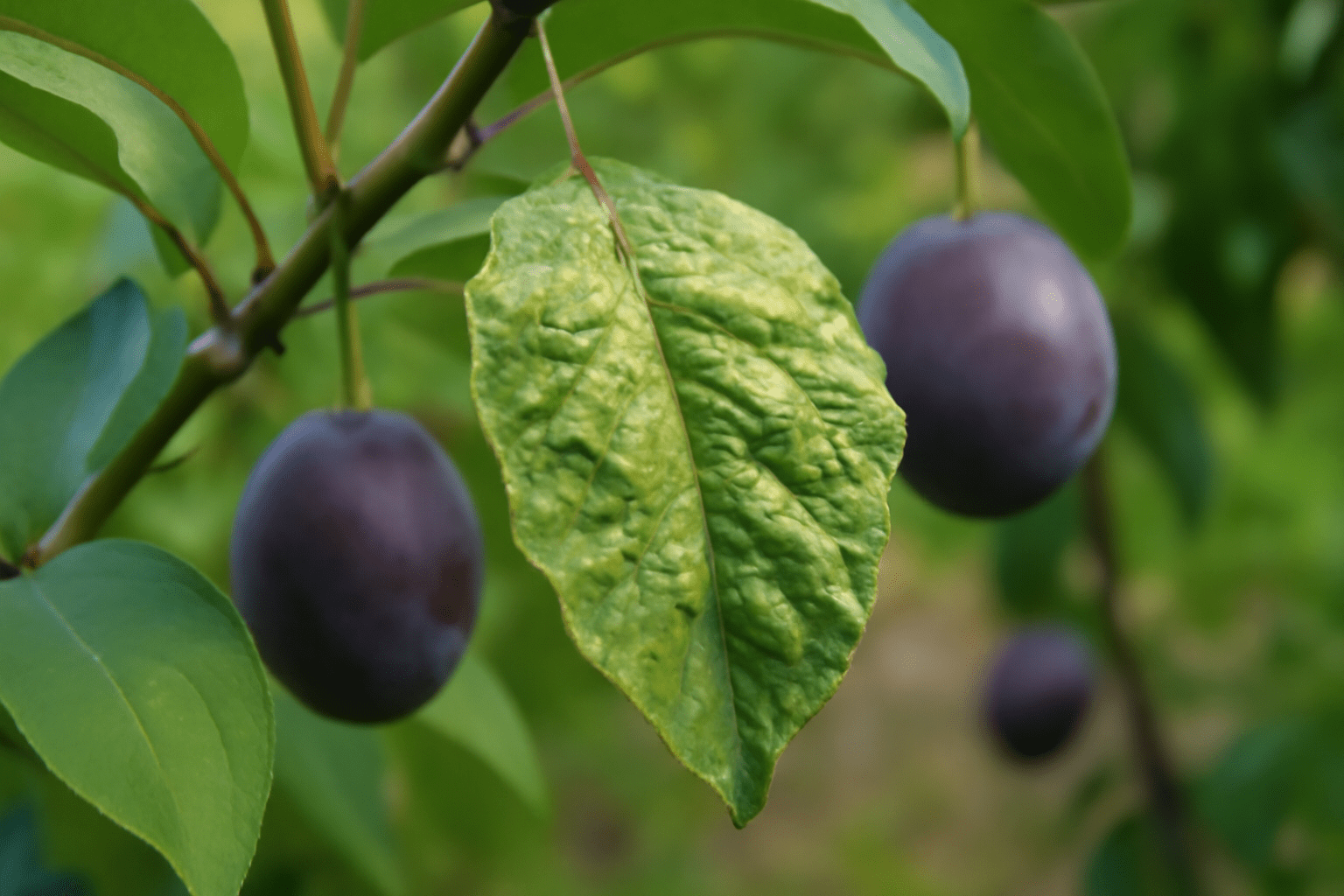
Pro Tip: Introduce beneficial insects like ladybugs to control aphids naturally, creating a balanced garden ecosystem. 🐞
5.3 Fruit Drop or Low Yield 😞
Fruit drop or poor yields can be frustrating, but they’re often fixable with proper care.
- Causes:
- Stress: Overwatering, underwatering, or extreme temperatures can cause fruit to drop prematurely.
- Nutrient Deficiency: Lack of key nutrients like potassium or phosphorus reduces fruit set.
- Improper Pollination: Insufficient pollinators or poor weather during flowering can limit fruit production.
- Solutions:
- Maintain consistent watering and mulching to reduce stress.
- Test soil annually and apply a balanced fertilizer to correct deficiencies.
- For pollination issues, plant pollinator-friendly flowers or hand-pollinate citrus varieties using a small brush.
- Example: A gardener in California noticed low yields on their citrus cocktail tree. After testing the soil and adding a potassium-rich fertilizer, their tree produced 20% more fruit the next season.
6. Harvesting and Enjoying Your Fruit Cocktail Tree’s Bounty 🍑
6.1 When and How to Harvest 🥄
Harvesting from a fruit cocktail tree is exciting, as each graft may ripen at different times, providing a staggered harvest season.
- Signs of Ripeness:
- Stone Fruits: Peaches, plums, and nectarines should be slightly soft to the touch with vibrant colors. For example, a ripe peach will yield slightly when pressed gently.
- Citrus Fruits: Oranges and lemons should have bright, uniform color and feel heavy for their size.
- Apples/Pears: Fruits should detach easily when lifted and twisted.
- Harvesting Techniques:
- Use clean, sharp pruning shears or scissors to cut fruit from the tree, leaving a short stem to avoid damaging branches.
- Handle fruits gently to prevent bruising, especially for soft varieties like peaches.
- Harvest in the morning when fruits are cool and hydrated for the best flavor.
- Timing: Depending on the varieties, harvests may span from early summer (peaches) to late fall (apples). Check each graft’s expected ripening time, often provided by the nursery.
6.2 Storing and Using Your Fruit 🍎
Once harvested, proper storage and creative use of your fruit ensure you enjoy the full bounty.
- Storage Tips:
- Store stone fruits like peaches and plums at room temperature until fully ripe, then refrigerate for up to two weeks.
- Keep citrus fruits in a cool, well-ventilated area or refrigerate for up to a month.
- Apples and pears can last 1-2 months in a cool, humid environment like a root cellar or refrigerator crisper.
- Recipe Ideas:
- Fruit Salad: Combine peaches, plums, and cherries for a vibrant, fresh salad.
- Smoothies: Blend citrus fruits with yogurt and honey for a refreshing drink.
- Jams and Preserves: Turn excess fruit into homemade jams, like a mixed stone fruit preserve.
- Preserving the Harvest:
- Freezing: Peel and slice stone fruits, then freeze in airtight bags for up to 6 months.
- Canning: Make citrus marmalade or canned apple slices for year-round enjoyment.
- Drying: Use a dehydrator to create dried apricots or apple chips for healthy snacks.
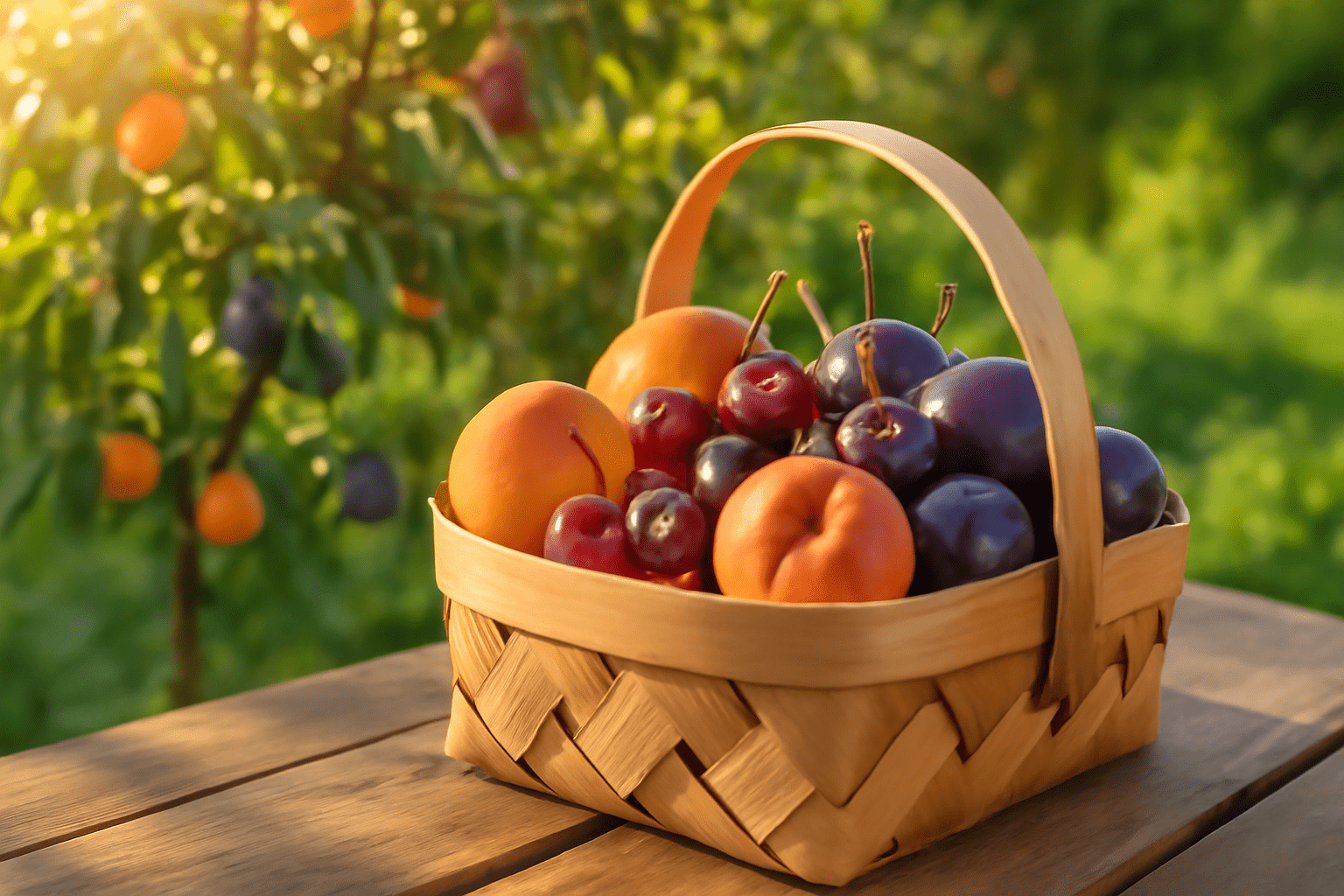
Pro Tip: Share your harvest with neighbors to build community and showcase your fruit cocktail tree’s bounty! 🍇
7. Expert Insights: Maximizing Long-Term Success 🌟
To ensure your fruit cocktail tree thrives for decades, incorporate these expert strategies:
- Regular Graft Monitoring: Check the health of each graft annually, looking for signs of disease, weak growth, or failure. If a graft isn’t producing, consult a nursery about adding a new one.
- Seasonal Care Checklist:
- Spring: Fertilize, prune lightly, and monitor for pests as buds form.
- Summer: Water consistently, thin fruit to prevent branch strain, and protect against pests.
- Fall: Harvest, clean up fallen leaves, and apply mulch to insulate roots.
- Winter: Prune heavily, apply dormant sprays (e.g., horticultural oil), and protect from frost in colder climates.
- Case Study: A gardener in Oregon planted a 5-in-1 stone fruit cocktail tree in their small backyard. By following a strict pruning schedule and using organic pest control, they harvested over 50 pounds of fruit annually within three years, including peaches, plums, apricots, nectarines, and cherries.
- Horticulturist Advice: “Fruit cocktail trees require patience and balance,” says Dr. Jane Smith, a horticulture specialist with 15 years of experience. “Regular pruning and soil testing are non-negotiable for long-term success.”
8. FAQs About Fruit Cocktail Trees ❓
- Q1: Can I grow a fruit cocktail tree in a container?
Answer: Yes! Dwarf varieties are perfect for containers. Use a large pot (at least 15-20 gallons) with good drainage, and ensure consistent watering and fertilization. Repot every 2-3 years to refresh the soil. 🪴 - Q2: How long until my tree produces fruit?
Answer: Most fruit cocktail trees begin producing within 2-3 years, depending on the tree’s age at planting and care quality. Dwarf trees may fruit sooner than standard ones. - Q3: Do all fruit varieties ripen at the same time?
Answer: No, ripening times vary. For example, peaches may ripen in July, while plums ripen in August. Check your tree’s specific varieties for a harvest timeline. - Q4: What if one graft fails?
Answer: If a graft stops producing or shows signs of decline (e.g., no leaves or fruit), remove it to prevent disease spread. Consult a nursery for re-grafting options. - Q5: Are fruit cocktail trees high-maintenance?
Answer: They require moderate care, similar to single-variety fruit trees. With proper pruning, watering, and pest management, they’re manageable for most gardeners.
9. Conclusion: Your Path to a Fruitful Garden 🍇
Growing a fruit cocktail tree is a delightful journey that combines horticultural artistry with the joy of fresh, homegrown fruit. By choosing the right tree, planting it properly, and following our expert care tips, you can enjoy a diverse harvest from a single, space-saving tree. From tackling graft imbalance to savoring your first peach-plum fruit salad, this guide equips you with the knowledge to succeed. Start small, stay consistent, and watch your garden flourish with vibrant colors and flavors. 🌸
Ready to plant your fruit cocktail tree? Share your progress with our gardening community and explore more tips on our website. For tools, soil testing kits, or high-quality trees, check trusted retailers like Stark Bro’s or your local nursery. Here’s to a bountiful harvest! 🍎

